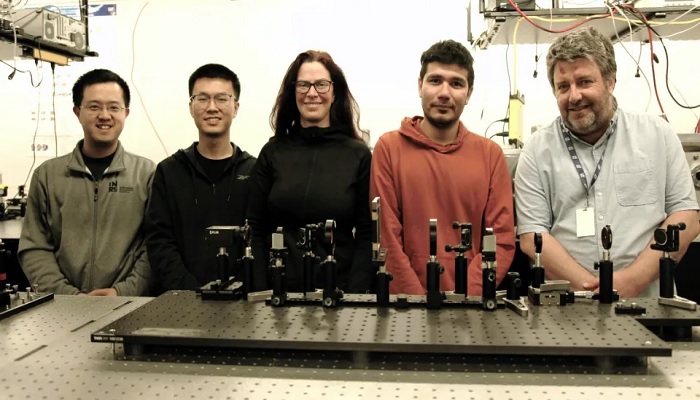
Researchers have developed an ultra-high-speed scientific camera, named SCARF (swept-coded aperture real-time femtophotography), capable of capturing images at a staggering rate of 156.3 terahertz (THz), or 156.3 trillion frames per second. This advancement promises significant strides in analysing micro-events that occur too quickly for current high-end scientific sensors to detect.
SCARF, reported in the scientific journal Nature, has been successful in recording ultrafast phenomena such as semiconductor absorption and the demagnetisation of metal alloys. This could pave the way for innovations in various fields, including shock wave physics and medical research.
The project was spearheaded by Professor Jinyang Liang from Canada's Institut national de la recherche scientifique (INRS). Liang, an expert in ultrafast photography, has built upon his earlier work in this field.
Professor Liang and his team have reimagined the concept of ultrafast photography. Traditional methods in this domain involve sequentially capturing frames and combining them to visualise motion. However, this technique has its limitations in studying certain fast-paced phenomena. According to Liang, events like femtosecond laser ablation and shock-wave interaction with cells cannot be effectively studied through conventional methods.
By building on Liang’s prior research, SCARF transcends these limitations. Julie Robert, an INRS communication officer, explains that the camera use a unique imaging approach to rapidly sweep a static-coded aperture without disrupting the ultrafast event being captured. This allows for encoding at up to 156.3 THz to individual pixels on a CCD camera. The camera can capture these events in a single shot, with adjustable frame rates and scales, in both reflection and transmission modes.
The camera operates on a computational imaging technique, collecting spatial data by allowing light to enter its sensor at slightly different times. This method enables the camera to capture extremely fast laser pulses. The raw data is later processed using a computer algorithm that decodes the staggered inputs, forming a coherent image from the trillions of frames.
What’s impressive is that this was achieved using standard, passive optical components, making SCARF cost-effective, energy-efficient, and of high measurement quality compared to existing methods.
While SCARF is currently more research-oriented, collaborations are underway with Axis Photonique and Few-Cycle to create commercial versions for scientific and educational institutions.















